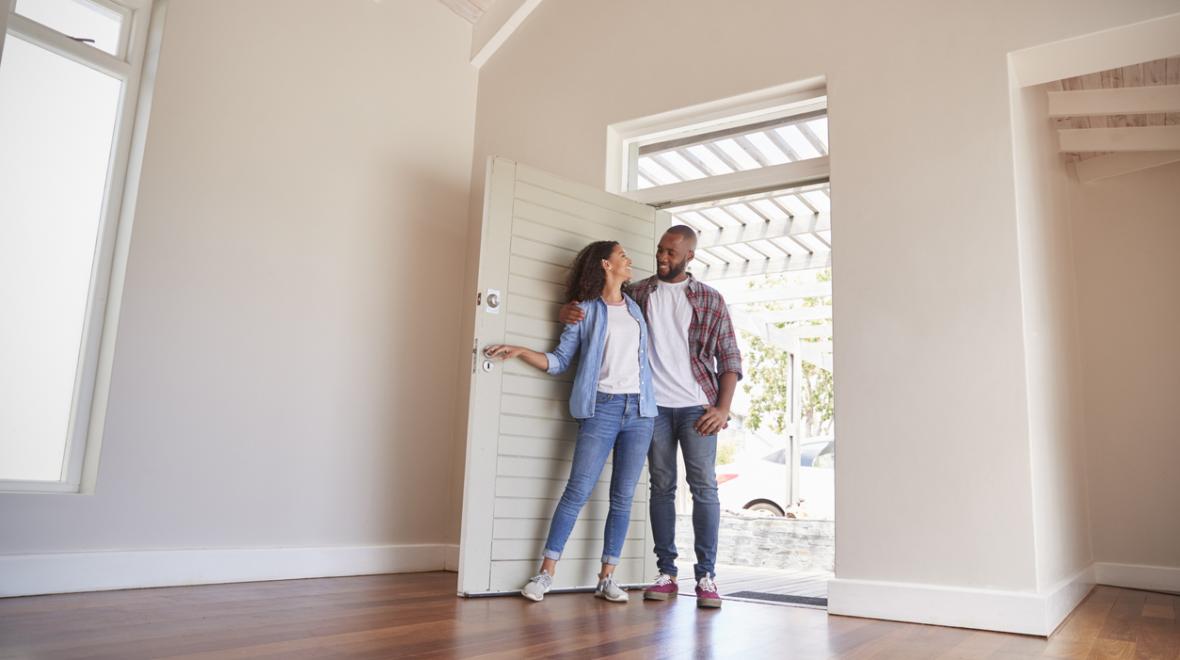
Editor's note: This article was sponsored by Flyhomes.
A year of spending more time at home than we ever thought possible has got a lot of Puget Sound-area families thinking about buying a new home. But trying to sell your house and buy a new one in the middle of a pandemic is a daunting endeavor to say the least. It’s hard enough fitting your entire life’s activities into a too-small house. Is it even possible to keep the place clean enough to show? Do you really want strangers walking through your house at all?
The housing market in Seattle was crazy before but the pandemic made things even more complicated. While tech millionaires won bidding wars with cash offers, regular families were navigating a lengthy financing process that hadn’t changed in decades.
The tricky timing of trading up
Moving on from your starter home is a financial dance with tricky timing. If you don’t simultaneously find a new home and a buyer for your current one, you have to navigate contingent offers, double mortgages and the possible necessity of temporarily moving into a rental between houses. In places like Seattle, where the number of buyers far exceeds the inventory and contingent offers never win bidding wars, it doesn’t work very well.
“The playing field in real estate is just not even. Sellers want certainty and speed. Those things can matter even more than getting the highest price. Cash has a huge advantage,” says Liz Gallagher, editorial director at Flyhomes, a real estate brokerage and technology company operating in the Greater Seattle area, Portland, San Francisco, Southern California and Boston. (She is also a Flyhomes client, having recently upgraded from a condo to a single-family home.)
When the pandemic hit, trading up got even more complicated, as touring other people’s homes while letting strangers waltz through yours became a legitimate health hazard. Moving twice graduated from a hassle to a logistical nightmare. But with work and school taking place at home, the need for adequate space has never been more of a priority for families.
The lowdown on ‘trading up’
“I can tell you my own story, since it’s kind of a typical case,” Gallagher offers. She loved her condo, but after a few years, her needs had changed. She started casually browsing listings and found two houses in West Seattle that she loved. More curious than serious, she toured them. “From that day, when I was 20 percent serious, to moving into my house, was two weeks.” Gallagher used a Flyhomes process called Trade Up.
“For people in competitive markets like Seattle, Trade Up is a way to help families buy a new home before they sell their current home,” Gallagher explains. With Trade Up, Flyhomes buys the new house on your behalf with cash. You move into the new home immediately, paying rent to Flyhomes until your previous home sells. (In Seattle, that averages two weeks, but Flyhomes will buy it at a predetermined price if it takes longer than 90 days.) Then you buy your new home from Flyhomes for the price they paid, using financing from the lender of your choice.
“We have people who come to us with a big family, pets, even extended family staying with them. They want to get into their long-term home without having to move into a temporary location,” says Sophia Lu, director of the Flyhomes Trade Up program.
For a smooth and speedy trade-up, it’s a good idea to have everything prepared in advance.
Preparing your finances
When trading up, all the usual advice about cleaning up your credit still applies. But getting prequalified or preapproved for a loan may no longer be the best plan.
“Prequalification is an estimate based on numbers you could get wrong,” says Gallagher. “What we recommend to everyone is a thing called pre-underwriting. Pre-underwriting gives absolute certainty.” Pre-underwriting is based on the complete documentation you will need for your mortgage.
“It can sound daunting, but it’s the same work you’re going to have to do to buy a home — you’re just doing it up front,” says Gallagher. By doing that work in advance, you can eliminate financing contingencies when you make an offer. Even with a cash offer, it saves time when you’re ready to buy, and because it’s not common yet, it helps you stand out from other potential buyers.
Preparing your home
“The best thing the seller can do is start decluttering,” says Gallagher. Clean up the yard, too, and take care of easy repairs, such as touching up dinged walls. In Seattle, one common home repair that comes up in inspections is old concrete sewers, but your real estate agent can help you decide how to prioritize these bigger jobs before listing.
“Pre-listing preparation work is important. The details of how you prepare a home for the market will pay off. Even though it’s a hot market, buyers may be turned off by those details if we don’t take care of them beforehand,” says Lu.
“We really believe in staging,” says Gallagher. “It’s really important to help a buyer be able to visualize their life in the home.” Professional staging also ensures your home looks its best in listing photos and 3D virtual tours, which have become increasingly important during the pandemic. Although 100 percent virtual sales are still rare, many buyers pre-screen homes with online tours, and only visit the ones they’re seriously considering.
Preparing your kids
“This isn’t the fun part, but watch out for safety measures, like if stairs are too steep or rails are too far apart,” says Lu. Parents need to keep practicalities in mind, but it’s a great idea to also get kids daydreaming. Things such as picking out bedrooms, imagining where their desk will go and looking forward to a swing set in the new yard make change exciting instead of scary.
“When you’re choosing a new home, you’re also choosing a new neighborhood,” says Gallagher. She recommends visiting the parks and walking around the neighborhood to get a feel for it. It’s harder to visit shops and restaurants during COVID, but take note of what’s there. “Create some fun moments and memories before the big change,” says Gallagher. That way your kids will be as invested in your new home as you are.
|
Sponsored by: |
|
|












